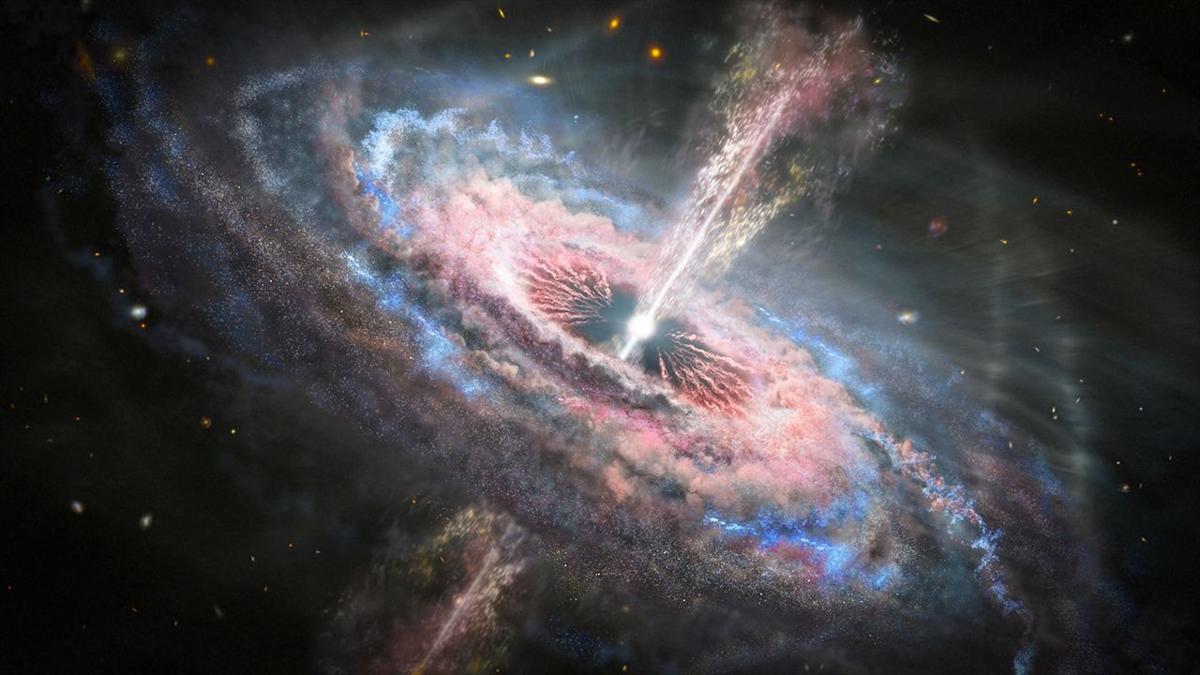A team from the University of Arizona’s Steward Observatory has discovered the earliest and most distant quasar known to science, edging out the previous record-holder found three years ago by some of the same astronomers.
The new quasar is 13.03 billion light-years from Earth and dates to 670 million years after the Big Bang, when the universe was just 5% of its current age.
Powered by ravenous supermassive black holes at the center of galaxies, quasars are among the brightest objects in the cosmos — flares of almost impossible strength caused by the superheated swirl of matter as it is consumed.
The new record-holder is roughly 20 million light-years farther away than the old one, which was also found with the help of UA researchers.
More importantly, the new quasar is erupting from a supermassive black hole that’s twice as heavy — with roughly the same combined mass as 1.6 billion of our suns — and that is offering researchers new clues to the formation of such features in the early universe.
“This is the earliest evidence of how a supermassive black hole is affecting its host galaxy around it,” said the paper’s lead author Feige Wang, a Hubble Fellow at UA’s Steward Observatory, in a written statement.
“From observations of less distant galaxies, we know that this has to happen, but we have never seen it happening so early in the universe.”
The research team also includes co-author Xiaohui Fan, regents professor and associate head of the UA Department of Astronomy, and co-author Jinyi Yang, astronomer Richard Green and doctoral student Minghao Yue, all from Steward Observatory.
Their work was funded by NASA, the National Science Foundation, the European Research Council and the National Science Foundation of China.
The new quasar was first spotted and then confirmed using multiple telescopes in Chile and Hawaii.
The research team unveiled its discovery during this year’s meeting of the American Astronomical Society, which wrapped up virtually on Jan. 15. Their findings have been submitted for publication in Astrophysical Journal Letters.
For a record-breaking discovery, though, the new quasar doesn’t have a very catchy name. It has been formally designated as J0313-1806.
Its time at the top might not last very long, anyway.
The researchers said they expect to find several more quasars from the same time period. At least one of those could be even farther away.





